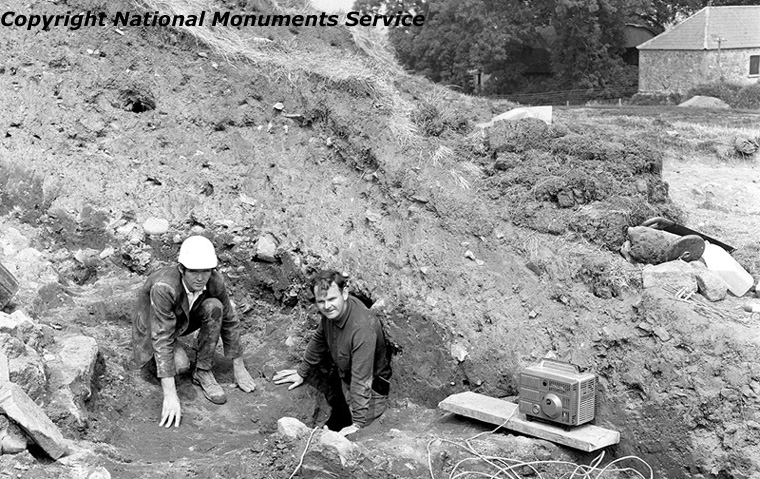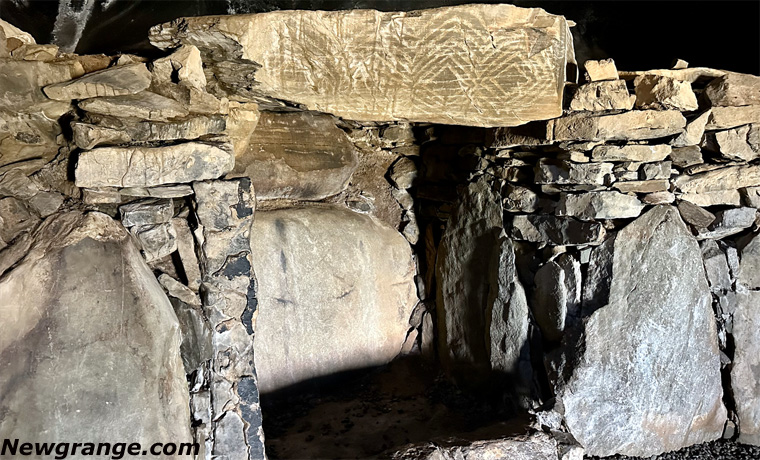Keeping the past alive
An article printed in the Irish Times 26 May 2001Excavation in Ireland has become increasingly associated with development-led archaeology. Developers target an area and planning permissions are dependent on archaeological assessments being carried out. Archaeological consultants are called in. The cynical might call it an exercise in damage limitation. Research is now a luxury and excavation reports are written quickly, if at all. Sites are speedily assessed and filled in to enable very different projects, such as road construction, to begin. For many archaeologists, scholarship is at the mercy of commercial enterprise.
Whereas countless field monuments were lost in the past through farming practices, many archaeological sites are now being systematically removed from the landscape by archaeologists, who have been granted licences by Duchas, the Heritage Service. It should be conceded that excavation by its very nature involves destruction. Soil-stripping along the Drogheda by-pass is exposing archaeological sites at approximately 50-metre intervals. Because competitive tendering is used to select archaeological companies, no general overview of the ancient landscape is emerging. A generation of archaeologists can now only wonder at the achievements of scholars who worked with less technology but also far less pressure.
No one is more aware of the layers of settlement that make up the story of a civilisation than George Eogan, former senator and first chairman of The Discovery Programme, whose work at Knowth, one of the three great mounds in the prehistoric cemetery at Brugh Na Boinne or the Bend of the Boyne, is one of the enduring - and ongoing - achievements of Irish archaeology. While Newgrange has been famous since the discovery in 1699 of the chamber tomb within it, Knowth was to remain the largest unopened mound in Ireland, if not Western Europe, until 1962 when Eogan began his work.

John Rock and George Eogan at the opening to the passage of the Eastern tomb at Knowth in August 1969
Now, some 40 years later, Eogan has methodically traced some 14 stages of settlement spanning the Earliest Neolithic settlers of 4000 BC to the present and written a classic text, Knowth and the Passage Tombs of Ireland, as well as ongoing reports and documentation. "This is all 17th-19th century," he says, pointing to the working yard across the country road from the main Knowth site. "This place has been in continuous use since pre-Christian times."
There is nothing of the showman or guru about him. Well known for not talking about himself, he has no store of personal anecdotes on hand in an interview situation. He is a constant. It is as if he entered the world as a fully formed middle-aged scholar. He has been a member of the Royal Irish Academy since 1969. Any remotely personal question is met with a kindly though firm, "that's not really relevant, is it?" Has the fact he is a Co. Meath man, born in the small village of Nobber, made him all the more aware of his native county's rich archaeological heritage? "No, I wouldn't say that." His approach is scientific, cautious, unromantic.
Nor does a spiritual dimension enter his deliberations. Asked if he wonders about the people who made these tombs or about the lives and deaths happening at Knowth over thousands of years, he shakes his head. "No, I'm interested in the evidence, the facts." Nor does he complain. While others lament the short-sightedness of officialdom and lack of research funding, Eogan, who recently visited the pyramids at Giza and other Nile sites, is enthusiastic, practical and busy, a solid professional academic who represents traditional scholarship. It was he who denounced the destruction of part of Knockans monument, a pre-historic earthwork at Teltown, Co. Meath.
Those who studied under him were also well-trained in excavation at Knowth - not only his own UCD students but also those from around the world. One of his four children, James, is a career archaeologist, his three daughters "are busy elsewhere". Eogan has published extensively, not only on his work at Knowth including two volumes of the multi-volume final report, but also on the Bronze Age. The accomplished Art: Gold and Gold-working in Britain and Ireland during the Bronze Age is a comprehensive study of gold in Britain and Ireland during that 1,500-year period. His most recent book, The Bronze Socketed Axehead in Ireland, published in Germany as part of a European series of archaeological studies, was launched last week at the Royal Irish Academy in Dublin. It is a highly specialised publication, based on 15 years' study and detailed examination of the 2,000 surviving Bronze Age axes kept in collections in Ireland, Britain, throughout Europe and North America.
The emergence of the socketed axe at the beginning of the Later Bronze Age indicates the amount of wood-working then going on from building houses and constructing track-ways to fine wood-working such as domestic vessels.
"The socketed axe is an important economic aspect of the late Bronze Age, it also shows how important wood-working had become by then. Of the 10 or so specialist hoards of the period that consist of tools only, all of these would have belonged to wood-workers and not one suggests a metal worker. This and the large number of socketed axes clearly indicates the important role of the woodworker in Late Bronze Age society." Eogan is pleased with the book but points out that socketed axes as a subject "aren't really best-seller material". This hints at his offbeat, often unexpected humour. Eogan can be exact to the point of being literal yet he can also be funny in a slightly surreal way.
His excavation career began under archaeologist P.J.Hartnett, fittingly in Co Meath, at Fourknocks, near Ardcath. Previously unknown, the monument had been brought to Hartnett's attention by a local man Paddy Maguire. Part of a cemetery complex, this fine passage tomb possesses the largest chamber of all such Irish monuments as well as outstanding examples of decorated stones. When Hartnett and Eogan began their work, they discovered an impressive collection of grave goods, including personal ornaments and pottery, now in the National Museum.

Fourknocks Passage Tomb excavated by P.J.Hartnett
Hartnett, then the Assistant Keeper of Irish Antiquities at the National Museum, discovered, in the course of his initial research, other sites and established there was an important complex of archaeological monuments in the immediate area. He excavated three sites including the spectacular passage tomb mentioned above. "There are also other mounds," says Eogan, "some of these may cover passage tombs but others, at least 10, possibly date from the Bronze Age." There are also three large earthen enclosures to be excavated.
It was the early 1950s. Eogan subsequently graduated from UCD with a degree in archaeology and history. As a student, he was influenced by Sean P. O Riordain (1905-1957), who introduced modern excavating techniques to Ireland, and Ruaidhri de Valera (1916-1978) who had succeeded Riordain as Professor of Archaeology in UCD and revised his predecessor's classic Antiquities of the Irish Countryside shortly before his death. In turn, Eogan succeeded de Valera as professor in 1979. Long before that appointment, Knowth had already become part of his life.
The career path to the great burial complex dominated by its huge central mound was varied and included work in the Middle East, most notably Petra in Jordan. Having developed an interest in excavation under Hartnett, Eogan continued to work with him. Hartnett was then Bord Failte's archaeological officer and Eogan was his assistant until beginning work on a PhD at Trinity College under one of the most inspiring of Irish minds, that of the great Frank Mitchell, then College Registrar. They became friends. "He was another of my mentors." Eogan's thesis on Irish Bronze Swords was published in 1965. He then began work at Oxford University Institute of Archaeology under the distinguished British archaeologist, Christopher Hawkes.
During these years, Eogan was also continuing exciting research projects in the Boyne Valley. "Frank Mitchell noted a small, insignificant mound on the estate at Townley Hall [a Francis Johnston classical mansion on the Drogheda-Slane road bought by Trinity College in 1956 and then functioning as an agricultural research centre] and considered it might be worth excavating. After some discussion, we decided to go ahead. We began work in 1960 and continued the following year. It produced important evidence, notably a habitation site of the Passage Tomb period and an unusual type of passage tomb that had previously been considered as Bronze Age. The excavation established the Townley Hall tomb as Neolithic.
It was a fascinating discovery. But it also posed a problem. Could these types of tombs actually date from the Neolithic and not the Bronze Age as previously thought? We decided to find out." As Townley Hall was part of the Brugh Na Boinne complex, they looked at other sites within the area.
Their investigations brought Eogan to Knowth. The site had been purchased by the State in 1939 but except for a limited investigation carried out by R.A.S. MacAlister in the early 1940s, it was not excavated. Eogan's first impression of Knowth was a vast, grass-covered mound in farmland. Today, after an intensive conservation programme carried by the National Monuments Service, his second home is an extraordinary, unearthly place dense with traces of settlement. The huge mound is surrounded by 20 satellite tombs.
In July, 1967, he discovered the first large chamber, the West Passage. "We crawled and walked part of the way, some of the large side-stones of the passage were off-plumb but still it was possible to continue and go right into the chamber. The fact that we were able to get in was a tribute to these remarkable passage tomb builders of 5,000 years ago."
The following year, Eogan discovered the even more spectacular East Passage more than 140 feet long with a corbelled ceiling over a chamber wider than that at Newgrange.
"Archaeology is a mutli-faceted resource from which we all can benefit. Tourism is but one aspect. Far more important is ongoing support for research. In the Boyne Valley, the emphasis is now very much on tourism. Research is in danger of being sidelined. This is critical because research is the life blood of any subject - without it, the subject remains static."
Boyne Valley Private Day Tour
 Immerse yourself in the rich heritage and culture of the Boyne Valley with our full-day private tours.
Visit Newgrange World Heritage site, explore the Hill of Slane, where Saint Patrick famously lit the Paschal fire.
Discover the Hill of Tara, the ancient seat of power for the High Kings of Ireland.
Book Now
Immerse yourself in the rich heritage and culture of the Boyne Valley with our full-day private tours.
Visit Newgrange World Heritage site, explore the Hill of Slane, where Saint Patrick famously lit the Paschal fire.
Discover the Hill of Tara, the ancient seat of power for the High Kings of Ireland.
Book Now
Home
| Visitor Centre
| Tours
| Winter Solstice
| Solstice Lottery
| Images
| Local Area
| News
| Knowth
| Dowth
| Articles
| Art
| Books
| Directions
| Accommodation
| Contact

